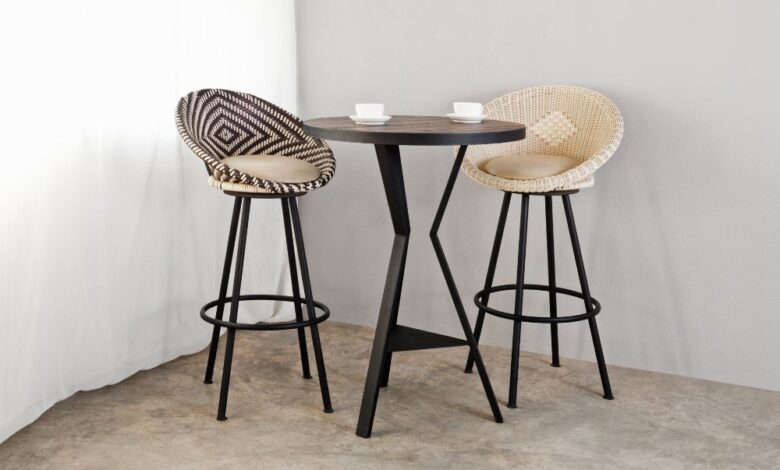Certainly, let’s continue discussing “furniture”
Certainly, let's continue discussing "furniture"

Certainly, let’s continue discussing furniture in the English language. While we often associate furniture with physical objects like chairs, tables, and sofas, it is important to note that the concept of furniture extends beyond just functional items. In literature and poetry, for instance, writers often use the term furniture of the mind to refer to ideas or concepts that occupy our thoughts and shape our perspectives. This metaphorical understanding of furniture not only adds depth to our appreciation of language but also highlights the role furniture plays in creating a meaningful environment.
Moreover, cultural variations play a significant role in defining what constitutes as furniture. In different parts of the world, you may come across unique pieces that aren’t commonly found elsewhere. For example, traditional Japanese homes feature low seating arrangements like floor cushions or zabutons instead of Western-style chairs. Similarly, Scandinavian design embraces simplicity and functionality with pieces like minimalist wooden shelves and sleek modular seating arrangements. These diverse cultural understandings remind us that furniture reflects not only practical needs but also aesthetic preferences rooted in history and tradition.
Furniture is an essential element of our everyday lives, and it plays a crucial role in shaping the functionality, comfort, and aesthetics of our living spaces. From the cozy sofa in your living room to the ergonomic chair at your office desk, furniture serves both utilitarian and decorative purposes. In this discussion, we will delve deeper into the world of furniture, exploring its various types, styles, and the factors to consider when choosing the perfect pieces for your space Furniture.
Types of Furniture
Furniture comes in a diverse range of types, each designed to fulfill specific needs and purposes:
1. Seating Furniture
- Sofas and Couches: These are the centerpieces of most living rooms, providing comfortable seating for relaxation and socializing.
- Chairs: Chairs come in various forms, including dining chairs, lounge chairs, and accent chairs, catering to different functions and styles.
2. Storage Furniture
- Cabinets: Cabinets and cupboards are ideal for storing items like dishes, clothes, or books, keeping your space organized.
- Bookshelves: These are perfect for displaying your book collection and decorative items.
- Dressers and Wardrobes: These pieces provide storage for clothing and accessories in bedrooms.
3. Tables
- Dining Tables: These tables are the focal point of dining rooms and serve as gathering places for meals.
- Coffee Tables: Typically placed in living rooms, coffee tables offer a surface for drinks, books, and decorative items.
- Desks: Office desks provide a workspace for productivity and come in various sizes and styles.
4. Bedroom Furniture
- Beds: Beds are the central piece of bedroom furniture, and various styles, from platform beds to canopy beds, cater to different tastes.
- Nightstands: These small tables are often placed beside the bed to hold items like lamps, alarm clocks, and books.
Furniture Styles
Certainly, let’s continue discussing “furniture” Furniture styles vary widely, reflecting different historical periods and design movements. Some popular furniture styles include:
1. Modern and Contemporary
- Known for sleek lines, minimalistic design, and a focus on functionality.
- Materials like glass, metal, and leather are common in modern and contemporary furniture.
2. Traditional
- Characterized by ornate details, rich wood finishes, and classic designs.
- Traditional furniture often features intricate carvings and upholstery with floral or damask patterns.
3. Mid-Century Modern
- Inspired by the mid-20th century design, this style emphasizes clean lines and organic shapes.
- Iconic pieces like Eames chairs are emblematic of mid-century modern design.
4. Rustic and Farmhouse
- Rustic furniture celebrates the natural beauty of wood with a focus on simplicity and durability.
- Farmhouse style combines rustic elements with practicality, often featuring distressed finishes and farmhouse tables.
Choosing the Right Furniture
When selecting furniture for your home or office, several factors should guide your decisions:
- Functionality: Consider how the furniture will be used and whether it meets your specific needs.
- Size: Ensure that the furniture fits comfortably within the available space without crowding the room.
- Comfort: For seating, prioritize comfort by choosing cushions and upholstery that provide adequate support.
- Aesthetics: Select furniture that complements the overall style and decor of your space.
- Durability: Invest in well-made furniture that will withstand wear and tear for years to come.
In conclusion, furniture is not merely functional but also an integral part of our living environments, contributing to our comfort, style, and organization. Whether you’re furnishing a home, office, or any other space, understanding the types and styles of furniture available and considering key factors will help you make informed choices that enhance your surroundings.




